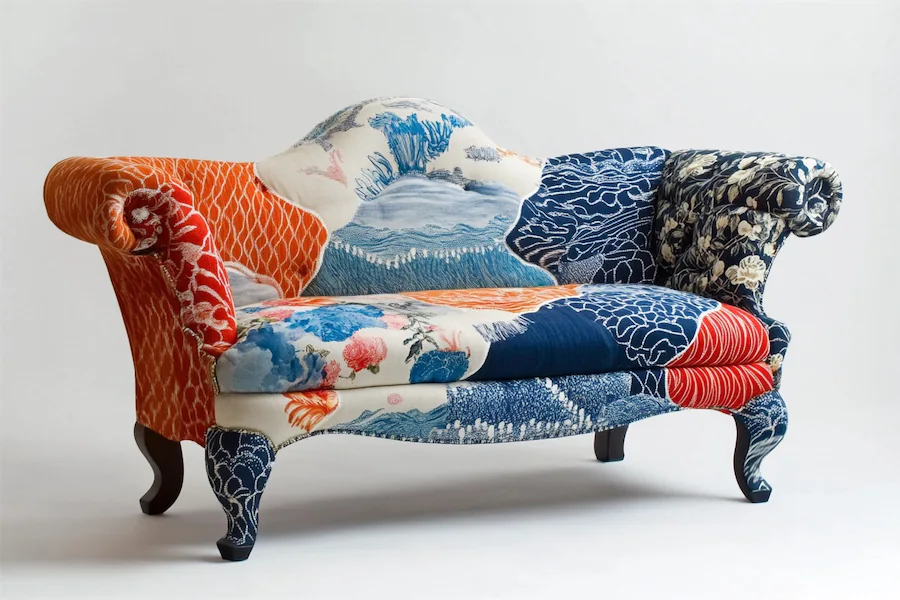Upholstered sofas, characterized by their padded frames and fabric or leather coverings, have evolved over centuries to become central elements of comfort and style in modern interiors. This article explores their history, key features, applications, selection considerations, and enduring appeal.
Introduction to Upholstered Sofas
An upholstered sofa features a frame enveloped in padding and covered with fabric or leather, providing enhanced comfort and aesthetic appeal. This combination of materials and craftsmanship allows for a diverse range of designs, accommodating various styles and preferences.
History and Origins of Upholstered Sofas
The evolution of upholstered sofas reflects advancements in materials, technology, and changing societal preferences:
- Ancient Civilizations: Early forms of upholstered seating appeared in ancient Egypt and Rome, where cushions and fabrics were used to enhance comfort.
- Middle Ages: During this period, seating was primarily hard and rigid, with minimal padding. Upholstery was a luxury reserved for the wealthy, often involving expensive materials such as velvet, silk, and leather.
- Renaissance (14th–17th Centuries): The modern sofa began to take form, with the introduction of more elaborate and comfortable seating. Early sofas featured armrests, cushioned backs, and upholstered seats, though they remained relatively stiff and formal.
- 17th to 18th Centuries: The Baroque and Rococo styles introduced more ornate and decorative upholstery, with intricate embroidery and embellishments. Upholstered furniture became a symbol of wealth and status.
- Industrial Revolution (Late 18th to Early 19th Century): Advancements in technology and materials allowed for mass production of furniture, making upholstered sofas more affordable and accessible. Furniture design emphasized comfort and durability.
- 20th Century to Present: The introduction of synthetic materials and innovative designs has led to a diverse range of upholstery options, catering to various aesthetic preferences and functional needs.
Key Features of Upholstered Sofas
Upholstered sofas are distinguished by several hallmark characteristics:
- Comfort: Padding materials such as foam, feathers, or synthetic fibers provide a plush seating experience.
- Aesthetic Versatility: A wide array of fabrics, colors, and patterns allows for customization to suit different interior styles.
- Structural Support: A sturdy frame, often made of wood or metal, ensures durability and longevity.
- Design Variety: Available in numerous styles, from traditional to contemporary, accommodating diverse tastes.
Applications of Upholstered Sofas
In interior design, upholstered sofas serve multiple roles:
- Living Rooms: Act as central pieces for relaxation and socialization.
- Offices: Provide comfortable seating in reception areas and executive suites.
- Hospitality Settings: Enhance guest experiences in hotels, lounges, and restaurants.
Considerations When Choosing an Upholstered Sofa
Selecting the appropriate upholstered sofa involves several factors:
- Fabric Selection: Choose materials that align with lifestyle needs; for instance, stain-resistant fabrics for households with children or pets.
- Frame Construction: Ensure the frame is made from durable materials to withstand regular use.
- Cushion Fillings: Decide between options like foam, down, or synthetic fibers, each offering different comfort levels and maintenance requirements.
- Size and Proportion: Consider the sofa’s dimensions relative to the room to maintain balance and functionality.
- Style Compatibility: Select a design that complements existing décor and personal aesthetic preferences.
Conclusion
Upholstered sofas have transformed from symbols of luxury to essential components of modern living spaces. Their evolution reflects technological advancements and changing societal values, while their enduring appeal lies in their ability to combine comfort with aesthetic versatility.
